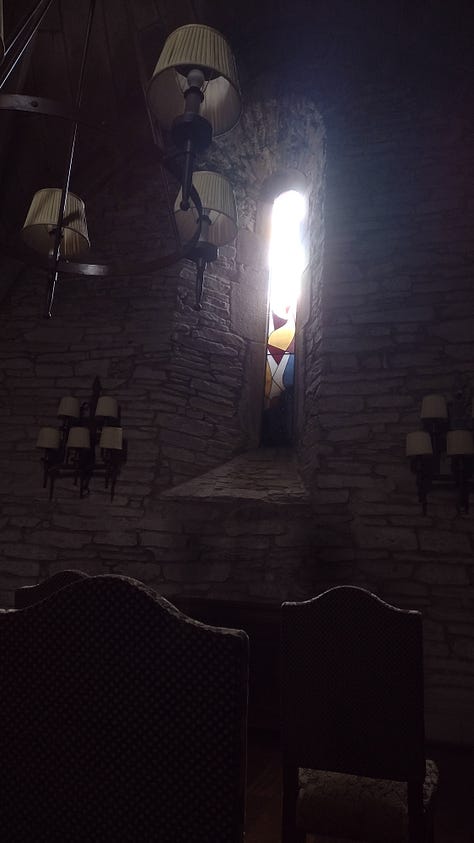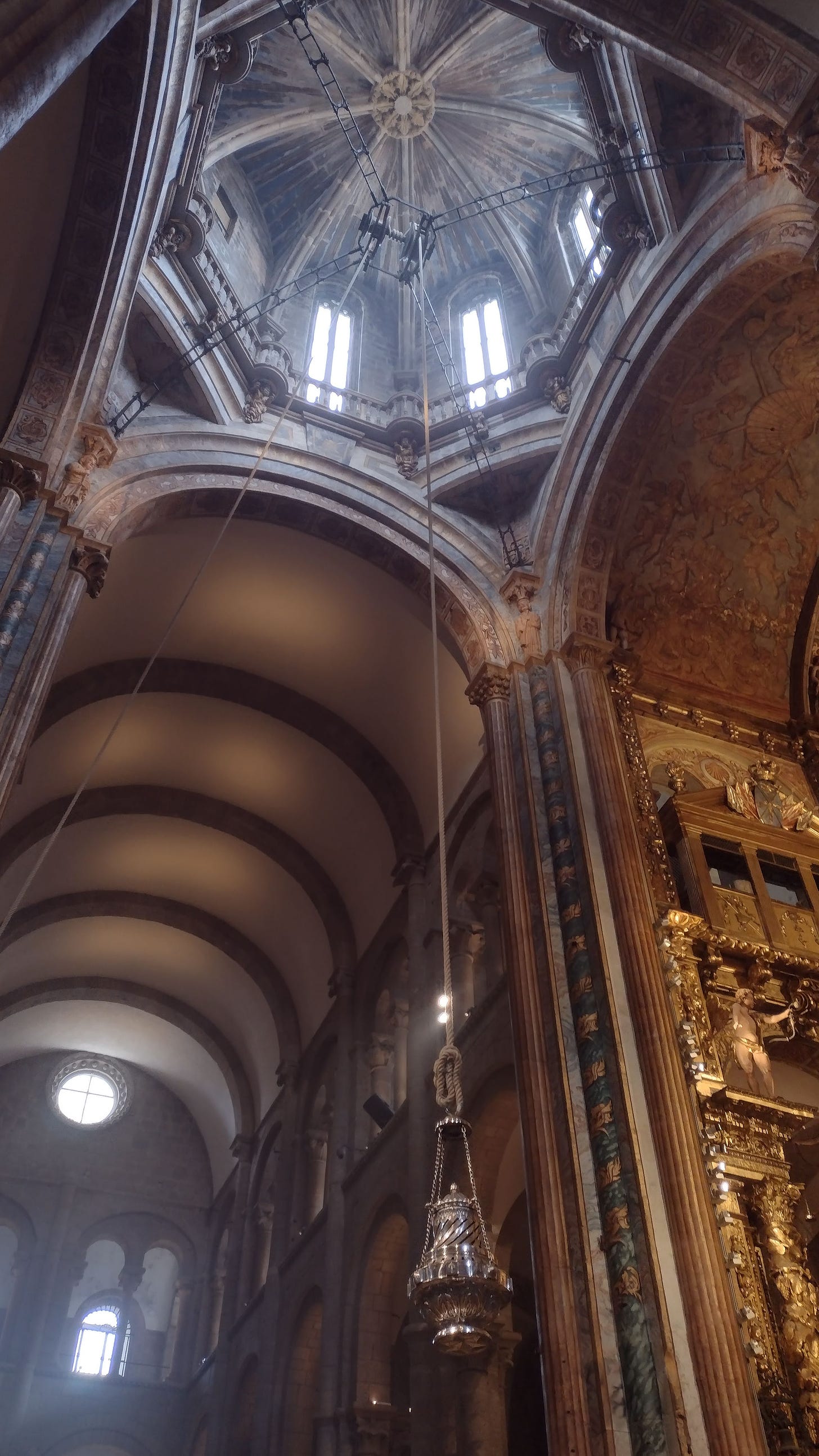The second half of my Portugal/Spain trip was in Santiago de Compostela. It was a major pilgrimage site for Medieval Catholics, and thus on my list of places to hit during my personal renaissance. Ideally I would have done some part of the pilgrimage myself, but the opportunity presented itself at the last minute and I wasn’t about to pass it up.
First stop: The Cathedral!
My first full day there was Jan 6th, which was very fortunate, because it turns out that’s Three Kings Day, which is a sorta big deal in Spanish Catholicism. It’s one of only eleven days in the year that the cathedral there busts out its major attraction - the Botafumeiro!
Kinda cool.
Your Culture Chooses Your Aesthetics
There was something about this cathedral that really felt off to me. It always felt kinda cold and distant. I’m not sure why exactly, but I suspect that the aesthetics are probably a big part of it. The cathedral is very baroque. I didn’t have a feel for what that word meant before, but now I think I do. It’s very over-the-top ornamentation. Tons of flourishes everywhere for no reason. Gold on everything. As my friend put it, “it’s pure camp.”
Like, what is going on here?
Every square inch is so busy and noisy!
Why do I dislike this style, but love High Gothic so much? Goth has quite a bit of ornamentation too, it’s just less shiny, less flowy, more severe. Is it just a matter of taste? At some point in my formative years I was exposed to a great deal of goth aesthetic, and it is now a foundational part of my perception of what is glorious and familiar. It brings a deep comfort which I hadn’t even noticed until I was faced with the funhouse mirror version of it.
I’m reading a little on cultural transmission right now, and it’s surprising to see these gears working inside myself. I absorbed it when young, it brings me comfort now that I’m not young, and I feel compelled to seek it out/recreate it, which would in turn expose any children I am (theoretically) caring for to the same aesthetic, thus perpetuation the cycle.
The Jehovah’s Witnesses really screwed up by not having a strong aesthetic. I got all my cultural formation from fantasy novels, games, music, and some anime!
This pic was the closest I could get to an aesthetic I liked inside the cathedral.
The cathedral has a museum of its own within the building. It’s definitely worth checking out, lots of cool stuff, and you come to realize why marble is so popular for statues when you see how bad other stones can look when you try to chisel them into a specific shape.
The museum also has the Hypno-Circle which is great to run into.
But most impressive is that it takes you all the way to the top floor and deposits you on the roof! I didn’t know this going in, and suddenly finding myself up there was a great surprise! It’s like, woah, I’m out in the open, and the spires are right there! It was rainy and atmospheric and Blade Runner-esque.
When You Make The Past A Tomb
Santiago de Compostela is gorgeous. It feels like walking around in a place plucked out of a fairy tale.
This feeling grows over time. You start to suspect that fairies are watching from the shadows, looking for the moment when you’ll break some ridiculous fairy rule and they have your soul forever. It feels like everyone around you is either also worried about the same thing, or has already been damned and is now playing out their role in the trick-the-mortal-into-eternal-servitude dance.
That is, of course, when there are people around. Not uncommonly you are alone, like a soul yanked out of time, left behind in a city while everyone else continues in the timestream un-charmed.
The city is divided between the Old Town and the New Town, and I spent most of my time in the Old Town (my lodging was there as well). This seemed like a good idea at the time, but the Old Town is a tomb. It is a finely preserved corpse, allowing you to see exactly how it looked in the peak of its life, without any of the animating life left within it. The only people there are others like me, marveling at the mummy, and those that have stayed behind to tend it. There are no children running through its streets. No teens hanging out wasting time, no harried office workers grinding out the nine-to-five. The whole place is trapped in amber, and it’s actually creepy.
In Oxford there was a ton of old stuff made of stone and wood, but the town was alive. The buildings were used for something, they had jobs. The streets flowed with people commuting or hopping out to get groceries. That was rarely the case in Santiago’s Old Town.
I wrote briefly on my recent realization that we owe a lot to the past, and we should venerate those who have gotten us this far. Santiago de Compostela showed me a stark example of this being taken way too far. Cities are for the living.
A Memorial For The Dying
Then I found this. A room in a medieval hospital situated over a lower sacristy were priests declaimed sermons and prayers. The acoustics here are amazing, and the sounds of the sacristy echoed up from below.
Those in the last stages of dying, beyond hope of recovery, were brought here. There are chairs here now, but back then they were often lain on the floor, with maybe a blanket. The words of the holy men filled the room, imploring God and spirits to bring health to those who could recover, and peace to those who could not.
And in the final hours of their lives, gasping as their lungs filled with fluid or spinning in feverish delirium, these men and women were lifted by the hymns of choirs and lullaby metered cant of priests, as slowly the colors drained away.
And the light faded out from the world.





















